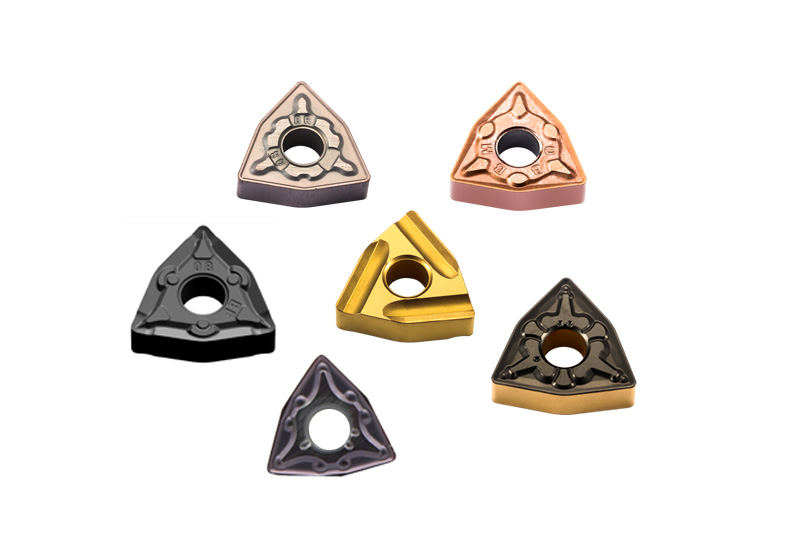Focus on tool design and R & D
Precision cutting tools from Germanymanufacturer
+86 133-9231-4699
Focus on tool design and R & D
+86 133-9231-4699

These tool expertise may take different forms, mainly including:
(1) Professional knowledge about materials
Andrew Hunter of Precision Dormer listed various ways of customizing drill performance for specific materials to be processed. In the past, it might be enough to just divide the tools into "coated tools" and "non-coated tools". Now, there are a wide range of coating compositions and structures that can meet the needs of processing different workpiece materials. Even though people are paying more and more attention to the tool matrix, coating technology is still the most important field of tool research and development today. Another important area is the innovative design of the geometry of the tool itself.
Through the special design of these three elements and some other factors, not only can the cutting tools for cutting difficult-to-machine materials be customized, but also the cutting tools for cutting seemingly easy-to-process materials can also be customized. Regardless of the type of material being used for cutting, the tool supplier should be able to select the correct tool for better machining performance.
Take aluminum machining tools as an example. A drill bit designed for aluminum processing has a high content of tungsten, which makes the surface of the tool very smooth and avoids build-up edge. In addition, the geometry of the drill bit should be able to stretch and break the chips in order to suppress the tendency of aluminum to easily form soft and sticky chips. By considering these elements, it can be ensured that the drill bit can obtain the best cutting performance when processing any specific metal or non-metal material.
The CDX-Inox drill developed by Precision Dormer is another example of a customized tool for processing specific materials. The drill uses a thin ribbed belt to reduce the contact with the surface of the workpiece, thereby avoiding the common work hardening phenomenon when drilling stainless steel. The positive geometric angle and the internal cooling liquid supply hole help to further solve the problem of stainless steel chip breaking and chip removal.
(2) Professional knowledge about artifacts
Another factor that is also crucial for tool selection is the geometry of the workpiece. In order to process a complex workpiece with some poorly accessible geometric features, the processing shop may need to invest heavily in non-standard tools to overcome the extremely challenging clearance machining problems, and be forced to adopt very low efficiency Cutting method to deal with the problems of poor rigidity and poor support caused by poorly used tools.
A professional tool supplier should not only have professional knowledge about materials, but also professional knowledge about workpieces, and be able to provide customized processing systems for difficult-to-machine workpiece types. An example of a type of workpiece that is difficult to machine is the runner and casing of a turbine. These complex parts are usually made of alloys that are difficult to machine, and their profile features are usually cavities with various difficult tolerance requirements. In order to cope with the special difficulties of processing these parts, Sandvik Coromant has developed the SL70/40 modular tooling system. This is an assemblable quick-change tooling system that can perform stable and heavy-duty machining on almost any geometric feature of turbine runners or casings. By assembling several modular components into different structures, the tool system can provide correct machining support with the correct tolerances for different turbine features. At the same time, the tool system also integrates high-pressure cooling (HP) technology, which is difficult to process. When processing materials, high-pressure coolant can be delivered to the correct position above the cutting edge.
(3) Professional knowledge about the terminal market
Different industries have different processing requirements, and the tool supplier should be able to help the processing shop meet these requirements. Certain materials themselves are becoming increasingly distinctive in the industry. A typical example is composite materials. Currently, Precision Dormer is investing heavily in the development of composite drilling tools and their application technologies for the aviation industry.
The processing challenges of certain parts are also related to specific industries. Chris Mills, aerospace project development manager at Sandvik Coromant, uses the surface integrity of the workpiece as an example to illustrate this point. In industries other than the aviation industry, surface integrity is not a key assessment indicator that processing workshops must face together. However, in the aviation industry, the force and temperature generated by processing may cause changes in the microhardness, plastic deformation and residual stress of the workpiece, which may lead to substandard performance of precision aviation parts.
Sandvik Coromant studied this phenomenon, and focused on the analysis of the impact of the tool's cutting edge flank wear on the quality of the machined surface. On this basis, the company has developed tools and cutting technologies that can control this wear, allowing aerospace parts suppliers to meet even the most stringent surface integrity requirements.
(4) Technical consultation on custom-made tools
For standard tools, technical consultation may not always be required. By participating in the process design, the tool supplier can also determine the processing occasions where the customized tool can truly create the most value. If the tool supplier has a wealth of knowledge related to the specific machining challenges of the workshop, then the customized tool may only need to be modified on the basis of the standard tool. Adding a specific angle to the standard tool can meet the processing requirements.

Mobile QR code

Official account

Applet



